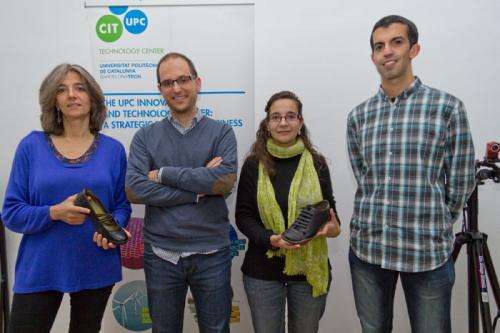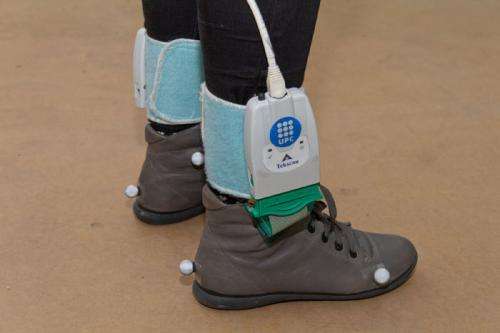UPC researchers study for Camper how to make more comfortable shoes

Researchers from the Biomedical Engineering Research Centre (CREB) of the Universitat Politècnica de Catalunya / BarcelonaTech (UPC) have carried out a biomechanical study of the shoes manufactured by the Majorcan Camper brand. Fifty-four volunteers tried six designs of men's and women's footwear that were analysed using optical motion capture systems, force plates, in-shoe pressure measurement devices and electromyography (EMG) sensors. The aim was to determine the parameters that affect how comfortable Camper's shoes are.
Software designed by biomechanical engineers and the expertise of shoemakers were brought together for the purposes of manufacturing comfortable shoes. Camper now uses parameters based on algorithms created by a UPC research group at the CREB.
Josep Maria Font, director of the biomechanics division of the CREB and head of the project, claims that this is a pioneering initiative—biomechanical studies of this kind have been carried out on sports footwear, but never on ordinary footwear.
Font told the SINC news agency that the project's objective was "to determine the parameters that affect how comfortable Camper shoes are. We achieved this by carrying out physical measurements in our biomechanics laboratory and conducting surveys to find out more about users' perceptions."
The researchers worked with 54 volunteers who tried on six models of men's shoes and six models of women's shoes, which were analysed using the sophisticated equipment at the Biomechanics Laboratory of the CREB, including in-shoe pressure measurement devices that are placed between the foot and the shoe to record forces acting on the foot. Force plates were used to measure contact forces between the ground and the shoe as the wearer walks. An optical motion capture system consisting of 18 cameras enabled the movement of the person's legs to be monitored at any given moment.
The researchers also used EMG sensors—electrodes that record the activity of the muscles in the human body. "In this case", Font added, "we focused on the movement of the ankle joint, as this is the closest to the shoe. On the basis of this electrical measurement we were also able to establish how much muscular activity was required when one shoe or another was used."

Tests with volunteers
The project leader says that on completion of the tests with volunteers, the physical measurements were analysed statistically and key parameters were obtained, including a model of the angle of the ankle or knee calculated using mechanical engineering algorithms.
"With this information, the statistical data and the results of the survey, we were able to determine the parameters that were most closely linked to the level of comfort perceived by the user," said Josep Maria Font.
The CREB, which is part of the Innovation and Technology Centre (CIT UPC), is currently exploring the possibility of carrying out similar studies with other brands in the footwear industry.
Mathematical models
The project began in 2012 and is currently in its second stage. Font stated that Camper have a longstanding tradition of shoemaking and know much about what makes a shoe comfortable. However, "with this study, the firm wants to improve this knowledge by taking a scientific approach and objective measurements using mathematical models".
Thus, when the brand wishes to bring a new shoe onto the market, it will first take it to the CREB to test the parameters that affect levels of comfort. "The firm will therefore have tangible references and data that will enable it to objectively improve new models," concludes Font.
Provided by Universitat Politècnica de Catalunya



















